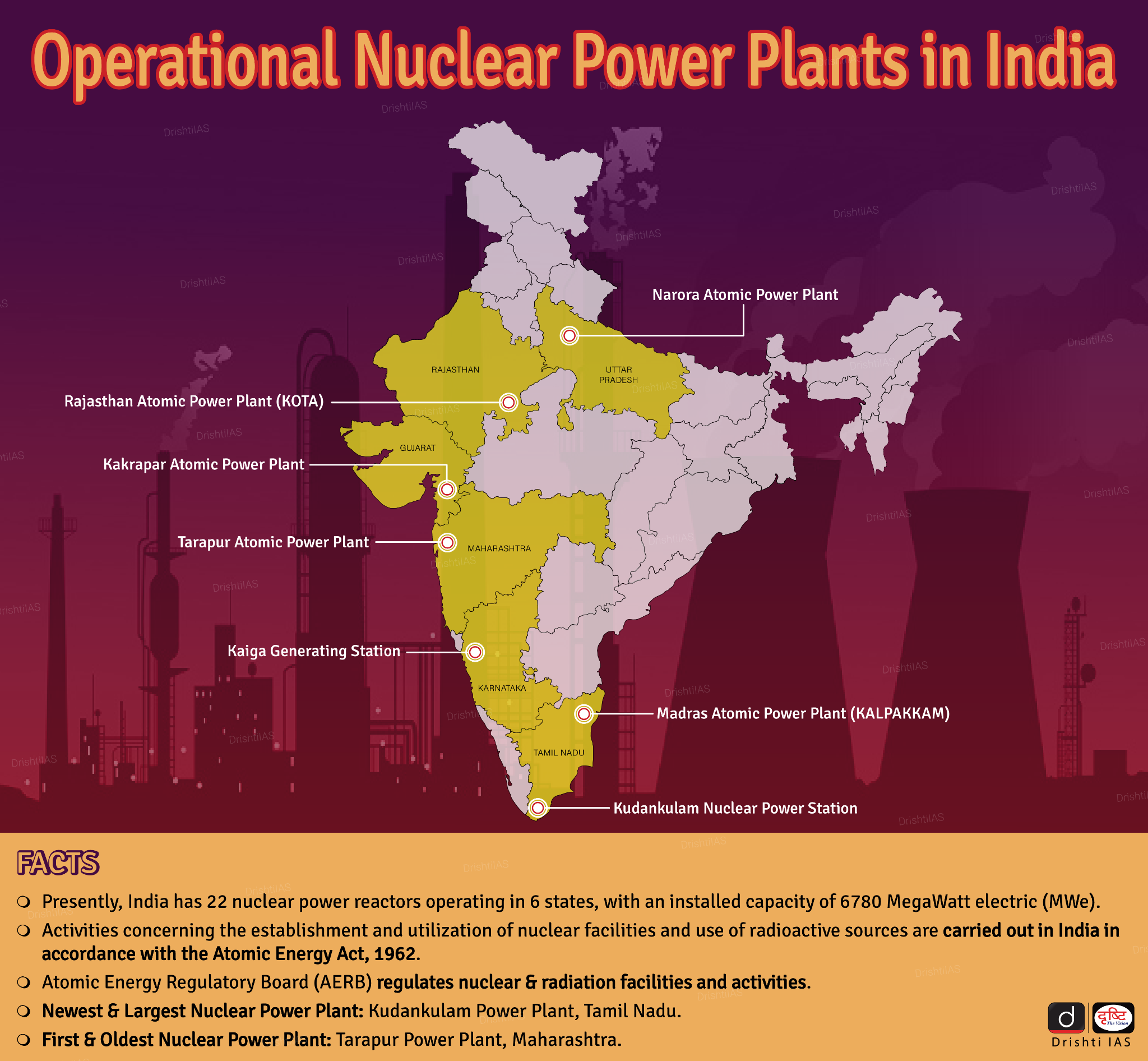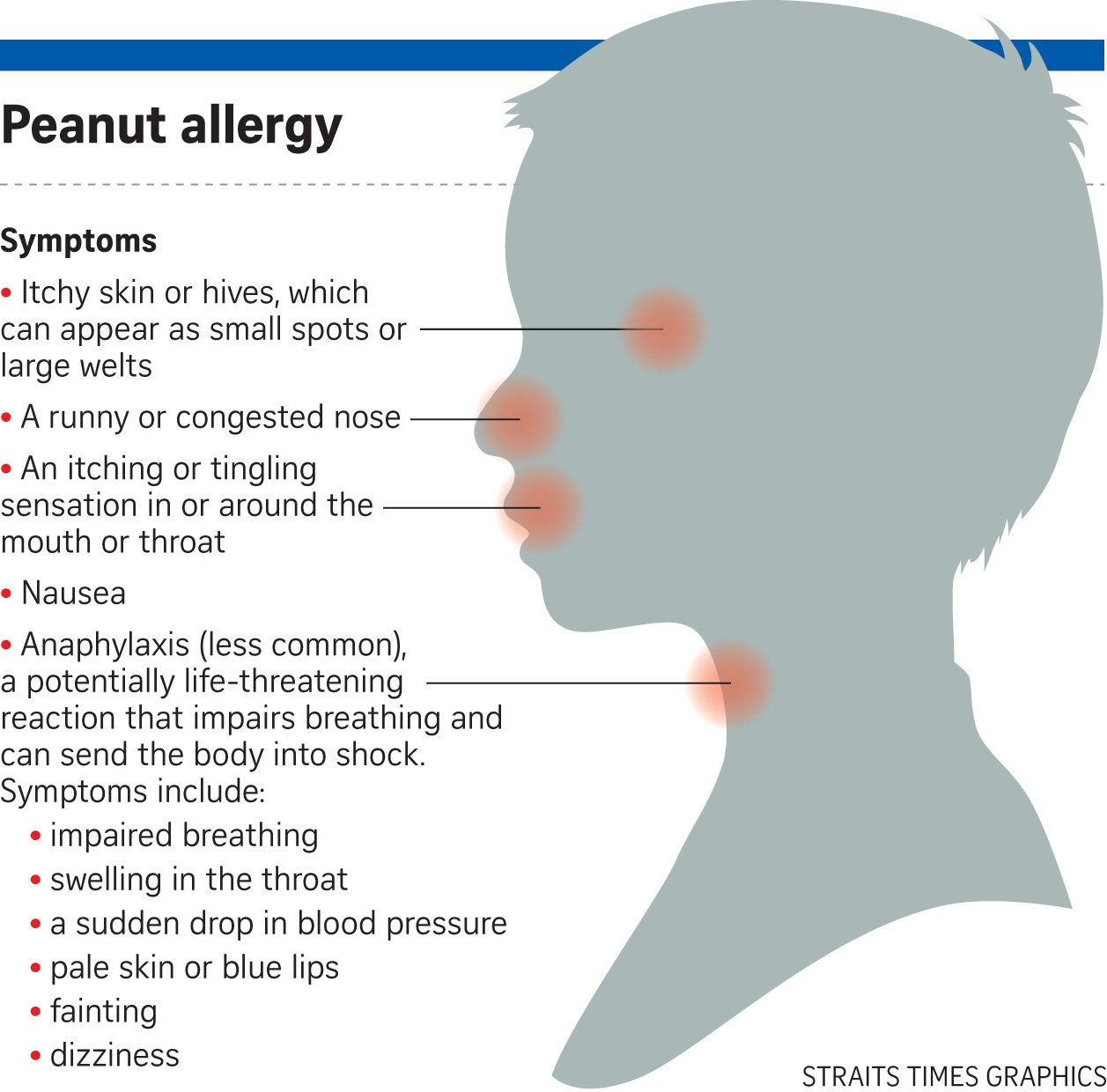Drowning Disasters in India
For Prelims: Drowning, Floods, Natural disasters, National Disaster Management Authority, Extreme weather events.
For Mains: Framework Related to Disaster Management in India, Factors are Exacerbating India’s Disaster Risk.
Why in News?
Recenlty, 25th July 2024 was observed as World Drowning Prevention Day. It is a global initiative that is dedicated to raising awareness and accelerating action on global drowning prevention.
- Drowning is a major public health problem that has caused over 2.5 million deaths in the last decade, mostly in low- and middle-income countries.
Drowning:
- As per World Health Organisation (WHO), drowning is defined as respiratory impairment resulting from submersion or immersion in liquid, with outcomes classified as death, morbidity, or no morbidity.
- World Drowning Prevention Day:
- It is an annual global event held on 25th July to honour those who have lost their lives to drowning and to promote water safety awareness.
- Established by a United Nations General Assembly (UNGA) resolution in April 2021, the event is coordinated by the World Health Organization (WHO).
- Theme for 2024: "Anyone can drown, no one should"
- WHO Slogan: "Seconds can save a life".
What are the Factors Contributing to Incidents of Drowning in India?
- Access to Water Bodies: Many Indians live near rivers, ponds, and wells for daily activities, lacking safety measures and supervision, especially for children.
- Flooding: Monsoon rains cause flooding, worsened by poor drainage, making communities vulnerable to drowning.
- Cultural Perceptions: Some communities view drowning as inevitable, hindering safety measures and awareness campaigns.
- Economic Constraints: Poverty limits access to safety equipment, swimming lessons, and emergency services, affecting low-income families in high-risk areas.
- Inadequate Safety Regulations: There is a lack of stringent safety regulations governing the use of public water bodies.
- Enforcement of safety measures, such as lifeguards at beaches and swimming pools, is often lacking, contributing to higher drowning rates.
What are the Statistics Related to Drowning Deaths?
- Global Data:
- Global Mortality: As per WHO Report on Drowning 2014, Drowning is a serious and neglected public health threat claiming the lives of 3,72,000 people a year worldwide.
- Regional Disparities:
- Low- and middle-income countries account for over 90% of unintentional drowning deaths. This death toll is almost two-thirds that of malnutrition and well over half that of malaria.
- More than half of global drowning incidents occur in the WHO Western Pacific and South-East Asia regions.
- Drowning death rates in the WHO Western Pacific Region are 27–32 times higher than those in the UK or Germany.
- Scenario for India:
-
Data: Around 38,000 Indians die of drowning every year.
- Drowning a Significant Concern: According to the National Crime Records Bureau (NCRB) report for 2022, drowning is a significant public safety concern and accounted for 9.1% of all accidental deaths in India, with 38,503 fatalities.
- State-wise Data: Madhya Pradesh reported the highest number of drowning deaths at 5,427, followed by Maharashtra (4,728) and Uttar Pradesh (3,007). This indicates a widespread issue across multiple states.
- Gender-wise Drowning Deaths:
-
Role of WHO in Addressing Drowning Incidents
- The World Health Organization (WHO) has recognised drowning as a leading cause of injury-related death and disability worldwide.
- Drowning deaths have emerged as a significant public health issue, gaining international attention with the WHO's first Global Report on Drowning Prevention in 2014.
- The WHO Resolution WHA76.18 emphasises the need for coordinated multi-sectoral action to combat this issue.
- WHO Recommendation for the Prevention of Drowning Accidents:
What Measures Can be Implemented to Prevent Drowning Incidents?
- Installation of Barriers: Erecting physical barriers around water bodies such as pools, wells, and ponds can significantly limit access, particularly for young children.
- Fencing and secure covers act as primary preventive measures to control entry to potentially hazardous areas.
- Safe Areas Away from Water: Creating designated safe zones for children and adults away from water bodies helps minimise the risk of accidental drowning. These areas should be equipped with engaging activities to divert attention away from water.
- Training in Rescue Techniques: Educating bystanders in safe rescue and resuscitation techniques, such as Cardiopulmonary Resuscitation (CPR) and mouth-to-mouth breathing, can save lives. Community programs should focus on training individuals to respond effectively in emergency situations.
- Integration into Education Curriculums: Incorporating water safety education into school curriculums ensures that children learn preventive measures from a young age.
- Enforcement of Boating Regulations: Implementing and enforcing strict boating and shipping regulations is essential. This includes mandatory life jacket use, regular maintenance of vessels, and adherence to safety protocols to prevent accidents on water.
- Flood Risk Management: Improving flood risk management through the development of flood-resistant infrastructure and early warning systems can significantly reduce the incidence of drowning during flood events. Local authorities should invest in such systems to enhance community resilience.
Conclusion
Drowning is a preventable tragedy that demands urgent attention in India. By understanding the socio-economic and environmental factors contributing to drowning incidents and implementing targeted interventions, we can significantly reduce the number of fatalities. Collaborative efforts involving government bodies, NGOs, and local communities are essential to creating a safer environment for all, particularly for vulnerable populations such as children. Addressing this silent disaster requires a comprehensive approach, ensuring that no life is lost to drowning.
|
Drishti Mains Question: What are the factors contributing to increasing deaths due to drowning in India? What measures should be taken to deal with this? |
UPSC Civil Services Examination Previous Year Question (PYQ)
Mains:
Q. Discuss the recent measures initiated in disaster management by the Government of India departing from the earlier reactive approach. (2020)
Q. Vulnerability is an essential element for defining disaster impacts and its threat to people. How and in what ways can vulnerability to disasters be characterized? Discuss different types of vulnerability with reference to disasters. (2019)
Q. Describe various measures taken in India for Disaster Risk Reduction (DRR) before and after signing ‘Sendai Framework for DRR (2015-30)’. How is this framework different from ‘Hyogo Framework for Action, 2005’? (2018)
Oil Drilling in Assam’s Hoollongapar Gibbon Sanctuary
For Prelims: Hoollongapar Gibbon Wildlife Sanctuary, Hoolock gibbons, Forest Advisory Committee, IUCN Red List
For Mains: Environmental and Wildlife Concerns, Conservation Challenges in Protected Areas, Biodiversity and Habitat Fragmentation, Human-animal conflict
Why in News?
The Union Environment Ministry’s recent approval for exploratory oil and gas drilling in Assam’s eco-sensitive zones has raised concerns about the potential threat to the endangered hoolock gibbons.
- Cairn India, the oil and gas unit of Vedanta Ltd, seeks to use 4.4998 hectares of reserved forest land for exploration in the eco-sensitive zone of the Hoollongapar Gibbon Wildlife Sanctuary.
How Will Oil and Gas Drilling Impact the Hoolock Gibbon?
- Endangered Species at Risk: The hoolock gibbon, a canopy dweller, is highly sensitive to habitat fragmentation. Any disruption, even minor, can severely impact their movement and survival.
-
Presence of Multiple Species: The area proposed for exploration is home to elephants, leopards, and hoolock gibbons, highlighting the rich biodiversity at stake.
- The are concerns raised that oil drilling could exacerbate human-wildlife conflicts and disrupt these species' habitats.
- Past Incidents: The Baghjan blow-out (2020) in Assam which caused extensive ecological damage, serves as a cautionary example of the risks associated with oil and gas exploration in sensitive areas.
Current Status of the Oil and Gas Drilling Project in Assam
- Approval: Granted preliminary approval for exploratory oil and gas drilling in parts of Assam, specifically within the Hoollongapar Gibbon Wildlife Sanctuary and other ecologically sensitive areas.
- Although the Forest Advisory Committee (FAC) has deferred its final decision.
- A separate proposal for extended reach drilling within this park has been rejected by the FAC, aligning with Supreme Court directives.
- The Supreme Court in 2023 directed that mining within a national park and wildlife sanctuary and within an area of one km from their boundary shall not be permissible.
- Environmental and Wildlife Concerns: The FAC has suggested preparing a wildlife management and mitigation plan to minimise disturbance to the hoolock gibbons and other wildlife.
- The project is subject to strict adherence to safety procedures and preventive measures against landslides and erosion.
What are the Key Facts About the Hoolock Gibbon?
- About: Gibbons, the smallest and fastest apes, live in Asia's tropical and subtropical forests. The hoolock gibbon, unique to India's northeast, is one of 20 gibbon species with an estimated population of 12,000.
-
All 20 gibbon species are at high risk of extinction due to declining populations and distribution since 1900.
-
The hoolock gibbon faces threats primarily from deforestation for infrastructure projects.
-
-
Gibbon Species in India: Two distinct hoolock gibbon species are found in India's northeastern region: the eastern hoolock gibbon (Hoolock leuconedys) and the western hoolock gibbon (Hoolock hoolock).
- A study by Hyderabad-based Centre for Cellular and Molecular Biology (CCMB) in 2021 proved through genetic analysis that there is only one species of ape in India, debunking earlier research that the eastern hoolock gibbon was a separate species.
- The study concluded that the two populations diverged 1.48 million years ago, while gibbons separated from a common ancestor 8.38 million years ago.
- However, the IUCN Red List categorises the western hoolock gibbon as endangered and the eastern hoolock gibbon as vulnerable.
- A study by Hyderabad-based Centre for Cellular and Molecular Biology (CCMB) in 2021 proved through genetic analysis that there is only one species of ape in India, debunking earlier research that the eastern hoolock gibbon was a separate species.
- Conservation:
- In India, the species is protected under Schedule 1 of the Indian (Wildlife) Protection Act 1972.
- The Government of Assam upgraded the Hoollongapar Reserve Forest to a Gibbon Wildlife Sanctuary in 1997, the first protected area dedicated to a primate species.
What are the Key Facts About the Hoollongapar Gibbon Wildlife Sanctuary?
- The Hoollongapar Gibbon Wildlife Sanctuary, established and renamed in 1997, is a crucial protected area in Assam, India.
- Renamed from the Gibbon Wildlife Sanctuary or Hollongapar Reserve Forest in 2004, this sanctuary is renowned for its unique biodiversity, particularly its status as the sole habitat for gibbons in India.
- Flora: Upper Canopy is dominated by the Hollong tree (Dipterocarpus macrocarpus), which grows up to 30 metres tall, along with species like Sam, Amari, Sopas, Bhelu, Udal, and Hingori.
- The Middle Canopy is characterised by the Nahar tree. Lower Canopy features a variety of evergreen shrubs and herbs.
- Fauna: Hoolock Gibbons and Bengal Slow Loris, the only nocturnal primate in Northeastern India.
-
Other Primates: Stump-tailed macaque, northern pig-tailed macaque, eastern Assamese macaque, rhesus macaque, and capped langur.
-
Mammals: Indian elephants, tigers, leopards, jungle cats, wild boar, and various civets, squirrels, and other mammals.
-
|
Drishti Mains Question: Q. How does human-wildlife conflict manifest in areas where industrial activities encroach on natural habitats? |
UPSC Civil Services Examination, Previous Year Questions (PYQs)
Prelims
Q. Consider the following pairs: (2010)
| Protected area | Well-known for | |
| 1. | Bhiterkanika, Orissa | Salt Water Crocodile |
| 2. | Desert National Park, Rajasthan | Great Indian Bustard |
| 3. | Eravikulam, Kerala | Hoolock Gibbon |
Which of the pairs given above is/are correctly matched?
(a) 1 only
(b) 1 and 2 only
(c) 2 only
(d) 1, 2 and 3
Ans: (b)
Hunger Strikes as a Tool of Protest
For Prelims: Right to Protest, Right to Life, Right to Freedom of Speech, IPC, BNS
For Mains: Hunger as a medium of Strike, Ethical dilemma related to hunger strike.
Why in News?
Hunger strikes have always raised a series of complicated moral questions, such as whether it is appropriate to provide medicine against the will of a person on strike or if force-feeding could be a dangerous protocol.
What are Hunger Strikes?
- About:
- Hunger strikes are a form of protest involving the voluntary deprivation of food, sometimes also water.
- They are used to inspire, dissuade, or pressure others by highlighting injustices or demanding change.
- This form of protest can be seen as a last resort when other means of protest are unavailable or ineffective.
- Historical Context of Hunger Strikes:
- Ancient Practices:
- The rules in pre-Christian Ireland provided for a troscad (fast) aimed at protesting against an unpayable debt, the object being to bring shame to the creditor.
- Kalhana’s Rajatarangini (account of royal dynasties of ancient Kashmir) has also several mentions of hunger strikes against undesirable royal edicts or taxes.
- Modern Development:
- Russian Political Prisoners (1870s): Used hunger strikes to protest prison conditions.
- Irish Republicans (1917-1920): Notable figures like Thomas Ashe and Terence MacSwiney died during hunger strikes, drawing attention to the Irish independence movement.
- Indian Freedom Fighters:
- Mahatma Gandhi: He described fasts as “a great weapon in the armoury of Satyagraha” and undertook this form of protest at least 20 times during the Independence movement.
- Jatin Das (1929): Died after a 63-day hunger strike, highlighting the inhumane treatment of political prisoners.
- Bhagat Singh and Batukeshwar Dutt: Protested poor prison conditions, drawing widespread support and media attention.
- Ancient Practices:
- Modern Context of Hunger Strikes in Independent India:
- Potti Sriramulu (1952): His hunger strike led to the formation of the state of Andhra Pradesh.
- Irom Sharmila (2000-2016): Protested against the Armed Forces Special Powers Act (AFSPA) in Manipur, highlighting human rights issues.
- Continued her hunger strike for 16 years while being force-fed.
- Anna Hazare: He started a hunger strike in 2011 to exert pressure on the Indian government to enact a stringent anti-corruption law.
- Recent Examples:
- Activist Manoj Jarange-Patil’s fasts demanding reservations for the Maratha community.
- Sonam Wangchuk’s 21-day hunger strike for Constitutional safeguards for Ladakh.
- Palestinian prisoner Khader Adnan’s death after an 87-day hunger strike in 2023.
What are the Arguments in Favour of Hunger Strike?
- Personal Autonomy and Freedom of Choice:
- Autonomy: Hunger strikes are seen as an expression of personal autonomy and self-determination. Individuals have the right to make decisions about their own bodies and to protest in a way that they see fit.
- Freedom of Expression: Hunger strikes are a form of free speech and a way for individuals to voice their dissent in a peaceful manner. This aligns with democratic values and the right to protest.
- Non-violent Resistance:
- Non-violence: Hunger strikes are a form of non-violent protest, which can be ethically preferable to violent resistance. This approach can draw attention to injustices without causing harm to others.
- Moral High Ground: By choosing to suffer personally rather than inflicting suffering on others, hunger strikers can claim the moral high ground. Their willingness to endure personal hardship can highlight the perceived injustice they are protesting against.
- Drawing Attention to Injustices:
- Awareness: Hunger strikes can effectively draw public and media attention to issues that may otherwise be ignored. This can lead to increased awareness and pressure on authorities to address the grievances being protested.
- Symbolic Power: The act of a hunger strike carries powerful symbolism. It demonstrates the depth of the protester's conviction and the seriousness of the issue, potentially galvanising public opinion and support.
- Historical and Cultural Significance:
- Historical Precedent: Hunger strikes have been used effectively in various historical contexts, such as the suffragette movement, the Indian independence movement led by Mahatma Gandhi, and more recent political prisoners. This historical context lends ethical weight to the practice.
- Cultural Resonance: In some cultures, hunger strikes resonate deeply as a form of protest and sacrifice (Jaina’s practice of Santhara). They can evoke sympathy and solidarity from the community and wider society.
- Power Dynamics:
- Challenging Power Dynamics: Hunger strikes can challenge power dynamics by putting pressure on those in authority to address the protester's demands. This can lead to negotiations and potentially peaceful resolutions.
What are the Arguments Against Hunger Strike?
- Self-Harm and Preservation of Life:
- Self-Harm: Hunger strikes involve deliberate self-starvation, which can lead to serious health consequences or even death.
- From an ethical perspective, deliberately causing harm to oneself can be problematic, especially if there are other non-harmful ways to protest.
- Preservation of Life: Many ethical frameworks, including religious and philosophical traditions, emphasise the importance of preserving life. A hunger strike, particularly one that leads to severe health deterioration or death, may conflict with these principles.
- Self-Harm: Hunger strikes involve deliberate self-starvation, which can lead to serious health consequences or even death.
- Coercion and Manipulation:
- Coercion: Hunger strikes can be seen as a form of coercion, pressuring authorities or the public to meet the protester's demands.
- This can raise ethical questions about the fairness and legitimacy of one's own demand.
- Manipulation: The hunger strikes may manipulate public sentiment and decision-making processes by exploiting empathy and moral guilt, which might not always lead to rational or just outcomes.
- Coercion: Hunger strikes can be seen as a form of coercion, pressuring authorities or the public to meet the protester's demands.
- Impact on Others:
- Emotional Burden: Hunger strikes can place a significant emotional burden on family, friends, and supporters who may suffer from stress, anxiety, and guilt.
- This raises ethical concerns about the broader impact of the protest on innocent parties.
- Responsibility: The responsibility for the striker’s well-being may fall on others who might be obliged to intervene to save the individual's life, potentially conflicting with the striker’s autonomy.
- Emotional Burden: Hunger strikes can place a significant emotional burden on family, friends, and supporters who may suffer from stress, anxiety, and guilt.
- Effectiveness:
- Questionable Effectiveness: There is no guarantee that a hunger strike will achieve its intended goals. Ethical concerns can also be raised about the proportionality and rationality of the protest.
- Moral Outcomes: Even if successful, the outcomes of hunger strikes might not always be morally justifiable.
- Exploitation and Vulnerability:
- Exploitation: Vulnerable individuals, including prisoners or marginalised groups, might be coerced or manipulated into participating in hunger strikes by more powerful actors, raising concerns about exploitation and informed consent.
- It could be seen as an ethically problematic situation of desperation rather than a genuine choice.
- Exploitation: Vulnerable individuals, including prisoners or marginalised groups, might be coerced or manipulated into participating in hunger strikes by more powerful actors, raising concerns about exploitation and informed consent.
- Legal and Medical Ethics:
- Legal Obligations: Authorities may face legal and ethical dilemmas regarding their duty of care.
- For instance, forcibly feeding a hunger striker can be seen as a violation of their autonomy, but not intervening can be seen as neglect.
- Medical Ethics: Healthcare professionals may face conflicts between respecting patient autonomy and their duty to preserve life.
- The ethical principle of "do no harm" can be challenged by the self-inflicted harm of a hunger striker.
- Legal Obligations: Authorities may face legal and ethical dilemmas regarding their duty of care.
What are the Other Dimensions of Hunger Strike?
- Significant Views on Hunger Strikes:
- Mahatma Gandhi: Preferred the term ‘fasting’ and used it as a form of non-violent protest.
- Fasts aimed at reforming those in power and appealing to their conscience.
- Believed fasting should be used against a "lover" (someone one loves) to reform rather than extort rights.
- Dr. B.R. Ambedkar: Criticised hunger strikes as "unconstitutional methods."
- Advocated for constructive approaches within the legal framework to achieve social and economic objectives.
- Mahatma Gandhi: Preferred the term ‘fasting’ and used it as a form of non-violent protest.
- Legal Framework for Hunger Strikes:
- Geneva Convention: The Geneva Conventions set standards for treating wounded combatants, but their application to hunger strikers is unclear.
- Hunger strikes as a form of protest can be seen as an extension of combat, complicating the role of health professionals.
- Indian Context: The Madras High Court had ruled that sitting on a hunger strike cannot attract the offence under Section 309 of the IPC (attempt to suicide) and it would not constitute an attempt to commit suicide.
- However as per Section 224 of BNS anyone who tries to commit suicide to force or stop a public servant from doing their job can be punished with up to one year in jail, a fine, both, or community service.
- Geneva Convention: The Geneva Conventions set standards for treating wounded combatants, but their application to hunger strikers is unclear.
Way Forward
- Clear and Specific Demands: To justify the extreme measure of a hunger strike, the demands must be clearly articulated, specific, and achievable. This ensures that the protest is not merely a symbolic gesture but a targeted action with the potential for resolution.
- Independent Mediation: A neutral third-party mediator should be involved from the outset. Their role would be to facilitate dialogue between the hunger striker and the relevant authorities, aiming to find a resolution without compromising the protester's health or safety.
- An independent ethical review board should assess the proportionality of the hunger strike.
- Healthcare Ethics Guidelines: Clear guidelines should be established for medical professionals treating hunger strikers.
- These guidelines should balance the duty to preserve life with respect for patient autonomy. They should also address issues such as involuntary feeding, which raises complex ethical questions.
- Public Awareness and Education: Society should be educated about the ethical implications of hunger strikes. This includes understanding the potential consequences for the individual, the impact on the community, and the importance of seeking alternative forms of protest.
- Legal Framework: Governments should consider developing specific legal frameworks to regulate hunger strikes. This could include provisions for mediation, ethical review, and the protection of the hunger striker's rights while ensuring public safety.
- Positive Incentives: Rather than solely focusing on the negative consequences of hunger strikes, policies should promote positive incentives for peaceful protest and dialogue. This could include support for mediation services, civil society organizations, and platforms for constructive engagement.
| Drishti Mains Question:
Discuss the ethical dilemmas associated with hunger strikes. How should authorities balance these concerns while addressing the grievances of hunger strikers? |
UPSC Civil Services Examination, Previous Year Question (PYQ)
Prelims:
Q. Under the Indian Constitution, concentration of wealth violates (2021)
(a) the Right to Equality
(b) the Directive Principles of State Policy
(c) the Right to Freedom
(d) the Concept of Welfare
Ans: (b)
Q. Which one of the following categories of Fundamental Rights incorporates protection against untouchability as a form of discrimination? (2020)
(a) Right against Exploitation
(b) Right to Freedom
(c) Right to Constitutional Remedies
(d) Right to Equality
Ans: (d)
Mains:
Q. Analyse the distinguishing features of the notion of Right to Equality in the Constitutions of the USA and India. (2021)
Criticality of Prototype Fast Breeder Reactor
Why in News?
Recently, the Atomic Energy Regulatory Board (AERB) has officially granted permission for the "First Approach to Criticality" of the 500 MWe Prototype Fast Breeder Reactor (PFBR) at Kalpakkam, Tamil Nadu, India’s first indigenous PFBR.
Note
- Criticality: Criticality in a nuclear reactor is when enough neutrons are produced by fission to replace those lost through leakage or absorption, ensuring the number of neutrons remains constant.
- Fission Vs Fusion:
|
|
.png) |
What is India’s FBR Programme?
- Efforts to build an FBR were initiated two decades ago.
- It is a step towards India developing comprehensive capabilities that span the entire nuclear fuel cycle, by which electricity is produced from uranium in nuclear power reactors.
- The Department of Atomic Energy (DAE) aims to increase the share of nuclear power in the energy mix by 2032 by producing 22,400 MWe from its nuclear power plants.
- It has approved the construction of 10 new PHWRs in ‘fleet mode’, in which a plant is expected to be built in five years from the first pouring of concrete.
- FBRs reactors generate more nuclear fuel than they consume due to the gainful conversion of fertile isotopes into fissile material.
- In 2003, the Bharatiya Nabhikiya Vidyut Nigam Ltd or BHAVINI was incorporated to build and operate India’s most advanced nuclear reactor, the Prototype Fast Breeder Reactor (PFBR).
- Once commissioned, India will be the second country after Russia to have a commercial operating FBR.
What are the Three stages of India’s Nuclear Energy Program?
- The First Stage: The installation of Pressurised Heavy Water Reactors (PHWRs) is underway, with PHWRs using natural uranium as fuel and heavy water as coolant and moderator.
- The Second Stage: It involves the setting up of FBRs backed by reprocessing plants and plutonium fabrication plants, primarily to multiply the inventory of fissile material.
- Multiplication of fissile inventory is also needed to establish a higher power base for using thorium in the third stage of the programme.
- The Third Stage: It will be based on the Thorium and Uranium Cycle. For producing Uranium-233 (U233), obtained by irradiation of thorium in PHWRs and FBRs, an Advanced Heavy Water Reactor (AHWR) is proposed.
- The combination of power reactors from all three stages is expected to ensure long-term energy security for the country.
- But the commercial utilisation of thorium on a significant scale can begin only when abundant supplies of either Uranium-233 (U233) or Plutonium-239 (Pu239) are available.
- The progress on the FBR has made the passage to the third phase visible.
UPSC Civil Services Examination, Previous Year Question (PYQ)
Prelims:
Q. Which one of the following statements best reflects the idea behind the “Fractional Orbital Bombardment System” often talked about in media?
(a) A hypersonic missile is launched into space to counter the asteroid approaching the Earth and explode it in space.
(b) A spacecraft lands on another planet after making several orbital motions.
(c) A missile is put into a stable orbit around the Earth and deorbits over a target on the Earth.
(d) A spacecraft moves along a comet with the same speed and places a probe on its surface.
Ans: (c)
Q. In the context of Indian news in recent times, what is MCX-SX? (2009)
(a) A kind of supercomputer
(b) Title of Moon Impact Probe
(c) Stock exchange
(d) Nuclear-powered submarine
Ans: (c)
Q. Which among the following has the world’s largest reserves of Uranium? (2009)
(a) Australia
(b) Canada
(c) Russian Federation
(d) USA
Ans: (a)
Sovereign Gold Bond Scheme
Why in News?
Recently, the Union Government in the Budget 2024-25 announced a reduction of the import duty on gold from 15% to 6%.
- Also, the government intends to finalise its decision on the future of the Sovereign Gold Bonds (SGB).
The Status of the Gold Industry in India
- Gold Reserves in India:
- As per National Mineral Inventory, total reserves/resources of gold ore in India estimated at 501.83 million tonnes as of 2015.
- Largest resources of gold ore are located in Bihar (44%), followed by Rajasthan (25%), Karnataka (21%), West Bengal (3%), Andhra Pradesh (3%), Jharkhand (2%).
- Karnataka commands around 80% of the nation's total gold output. The Kolar Gold Fields (KGF) in the Kolar district is one of the world's oldеst and deepest gold minеs.
- India Gold Import:
- India is the world's second-largest gold consumer. India's gold imports increased by 30% in 2023-24, reaching USD 45.54 billion.
- However, there was a significant decline of 53.56% in gold imports observed in March 2024.
What is the Sovereign Gold Bond Scheme?
- Launch:
- The SGB scheme was introduced in November 2015 with the aim of decreasing the demand for physical gold and redirecting a portion of domestic savings, which would otherwise be used to buy gold, into financial savings.
- Issuance:
- The Gold Bonds are issued as Government of India Stock under the Government Securities (GS) Act, 2006.
- These bonds are issued by the Reserve Bank of India (RBI) on behalf of the Government of India.
- They are available for purchase through Scheduled Commercial banks (except Small Finance Banks, Payment Banks and Regional Rural Banks), Stock Holding Corporation of India Limited, Clearing Corporation of India Limited, designated post offices and National Stock Exchange of India Limited and Bombay Stock Exchange Limited, either directly or through agents.
- Eligibility:
- The bonds are available for purchase by resident individuals, Hindu Undivided Families (HUFs), trusts, universities, and charitable institutions.
- Features:
- Issue Price: The price of gold bonds is linked to the price of gold of 999 purity (24 carats) as published by the India Bullion and Jewellers Association (IBJA), Mumbai.
- Investment Limit: Gold bonds can be bought in multiples of one unit (1 gram), up to specific limits for different investors.
- Retail (individual) investors and Hindu Undivided Family (HUF) have a maximum limit of 4 kilograms (4,000 units) per financial year, while trusts and similar entities have a limit of 20 kilograms per financial year. The minimum investment permitted is 1 gram of gold.
- Term: Gold bonds have a maturity period of eight years, with the option to exit the investment after the first five years.
- Interest Rate: The scheme offers a fixed annual interest rate of 2.5%, payable semi-annually. The interest earned on Gold Bonds is taxable according to the Income Tax Act, 1961.
- Benefit:
- SGBs can be used as collateral for loans.
- Capital gains tax on redemption of SGB for individuals has been exempted.
- Redemption refers to the issuer repurchasing a bond at or before maturity.
- Capital gain is the profit earned when the selling price of an asset, such as stocks, bonds, or real estate, exceeds its purchase price.
- Disadvantages of Investing in SGB:
- This is a long-term investment, unlike physical gold, which can be sold immediately.
- Although SGBs are listed on exchanges, the trading volumes are relatively low, making it challenging to exit before maturity
- Green Bonds:
- Green bonds are issued by companies, countries and multilateral organisations to exclusively fund projects that have positive environmental or climate benefits and provide investors with fixed income payments.
- The government plans to issue sovereign green bonds worth approximately Rs 20,000 crore in the financial year 2024-25.
UPSC Civil Services Examination, Previous Year Question (PYQ)
Prelims:
Q. What is/are the purpose/purposes of Government’s ‘Sovereign Gold Bond Scheme’ and ‘Gold Monetization Scheme’? (2016)
- To bring the idle gold lying with Indian households into the economy.
- To promote FDI in the gold and jewellery sector.
- To reduce India’s dependence on gold imports.
Select the correct answer using the code given below:
(a) 1 only
(b) 2 and 3 only
(c) 1 and 3 only
(d) 1, 2 and 3
Ans: (c)
Pingali Venkayya, the Man Behind Tricolour
The Prime Minister paid tributes to Pingali Venkayya on his birth anniversary (2nd August).
- He also urged citizens to support the Har Ghar Tiranga movement by unfurling the tricolour between 9th and 15th August, 2024.
Evolution of Flag:
- In 1916, Pingali Venkayya published a booklet titled A National Flag for India, featuring nearly 30 designs for a potential Indian flag, inspired by flags of other nations.
- Venkayya’s design for the National Flag was finally approved by Mahatma Gandhi in a Congress meeting in Vijayawada in 1921.
- The initial flag, called the Swaraj flag, consisted of two red and green bands (representing the Hindus and the Muslims religious communities). The flag also had a charkha, which represented Swaraj.
- Mahatma Gandhi adviced Venkayya to add a white band to represent peace.
- The Flag Committee (1931) replaced the red with saffron and placed saffron on top followed by white and then green. The charkha was placed on the white band in the middle.
- The colors stood for qualities and not communities i.e., the saffron for courage and sacrifice, white for truth and peace, and green for faith and strength. The charkha stood for the welfare of the masses.
- Post-Independence, a national flag committee under President Rajendra Prasad replaced the charkha with the Ashok Chakra.
- Pingali Venkayya:
- He fought the Second Boer War (1899-1902).
- In 1913, he delivered a lecture in Japanese in Bapatla, Andhra Pradesh called as ‘Japan Venkayya’.
- He was also known as Patti Venkayya for his research into the Cambodia Cotton.
- In 2009, a postage stamp was released for his contribution.
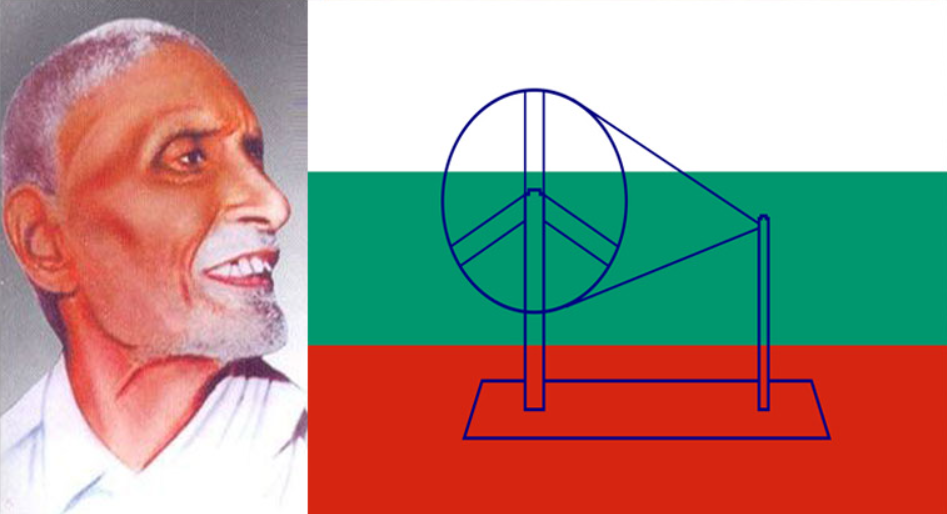
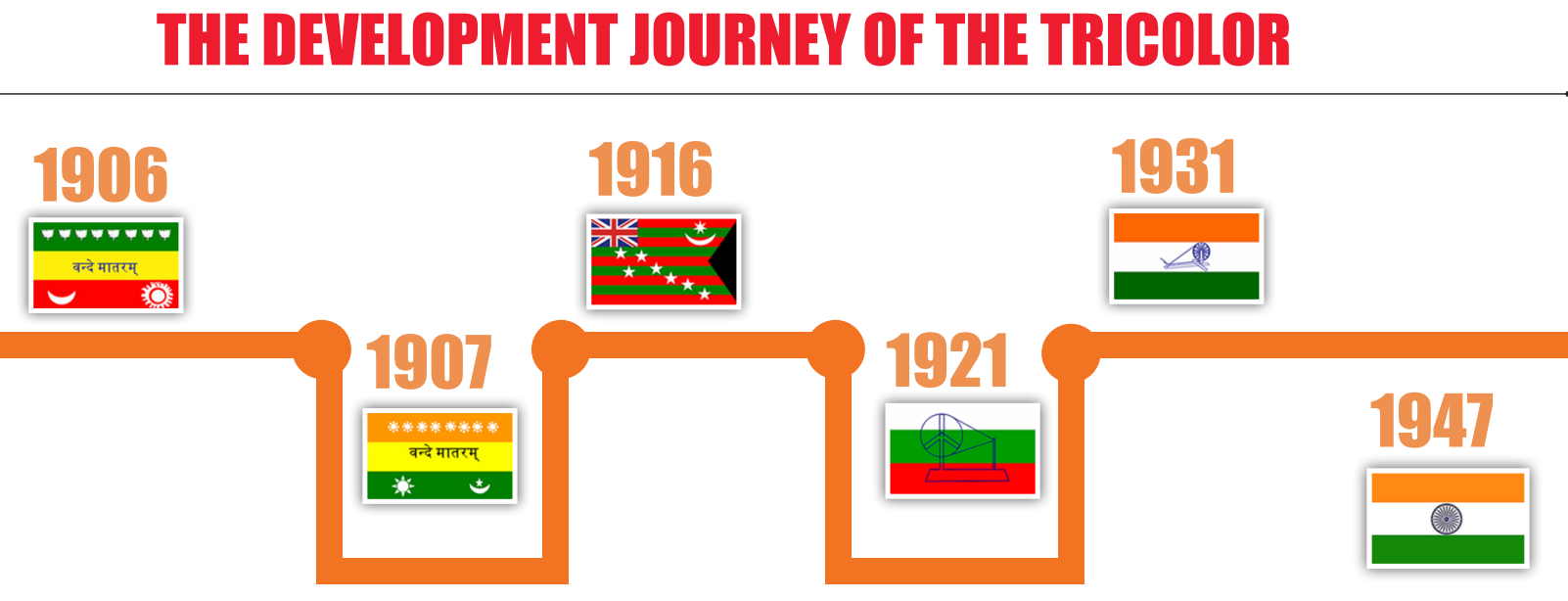
Fin Whale
Recently, Japan has expanded its commercial whaling to include fin whales, one of the largest animal species on the Earth.
- Japan also withdrew from the International Whaling Commission (IWC) and resumed commercial whale hunting in July 2019.
- Fin Whale:
- Scientific Name: Balaenoptera physalus.
- IUCN Red List status: Endangered (2018-2021 assessments).
- Potential Threats: Commercial Whaling, Large Commercial Vessels, Shipping Noise And Disturbance, Seismic Activities, Pollution (Persistent Organic Pollutants), and Changes in Climate and Ocean Acidification.
- Japan, one of only three countries that hunt whales commercially (along with Norway and Iceland).
- Whale Conservation Efforts:
- The Southern Ocean Whale Sanctuary is an area of 50 million sq km surrounding the entire continent of Antarctica where the IWC has banned all types of commercial whaling.
- Despite a ban on all whaling in the Southern Ocean Whale Sanctuary, Japan’s Whale Research Program continues to hunt Minke whales in the Sanctuary.
Green National Highway Corridor Project
The Government of India and the World Bank have signed an agreement for the construction of Green National Highway Corridors Project (GNHCP) in Himachal Pradesh, Rajasthan, Uttar Pradesh and Andhra Pradesh, with loan assistance of USD 500 million.
- The project aims to show how highways can be safe and eco-friendly by using green technologies and focusing on climate resilience. It includes:
- Conservation of natural resources using cement treated sub base/reclaimed asphalt pavement
- Promote use of local/ marginal material such as lime, fly ash and waste plastic
- Use of bio-engineering measures for slope protection like hydroseeding, shotcrete crib wall with vegetation, bamboo plantation, hedge brush layer etc.
- The scheduled date of completion of the GNHCP project is by May 2026.
- 3 Components of GNHCP:
- Green highway corridor improvement and maintenance
- Institutional capacity enhancement
- Road safety
- Benefits of GNHCP:
- Reduce carbon emissions and conservation of natural resources
- Smooth and motorable roads with all weather connectivity
- Socio-economic development as well as enhanced trade and connectivity within the region
Read More: Green National Highways Corridor Project, World Bank
Peanut Allergy
Recently, Australia has launched a groundbreaking program for treating peanut allergies in infants, aiming to build immunity through oral immunotherapy.
- Australia is often referred to as the "allergy capital of the world," with 1 in 10 infants diagnosed with food sensitivities.
- The prevalence of peanut allergy in India is quite low (around 0.03%) among children.
- The program is designed for babies under 12 months who have been diagnosed with peanut allergies and are receiving care at participating hospitals.
-
Peanut Allergy:
- It occurs when your immune system mistakenly identifies peanut proteins as something harmful.
- Peanut exposure can occur through direct contact (eating peanuts or peanut-containing foods), cross-contact (peanuts unintentionally included in other foods), or inhalation (breathing in peanut dust or aerosols).
- Symptoms:
- Treatment Method: Peanut allergy treatment focuses on avoidance, but oral immunotherapy, such as Palforzia (approved for ages 4-17), can reduce severe reactions. It's not a cure and is not suitable for those with certain conditions.



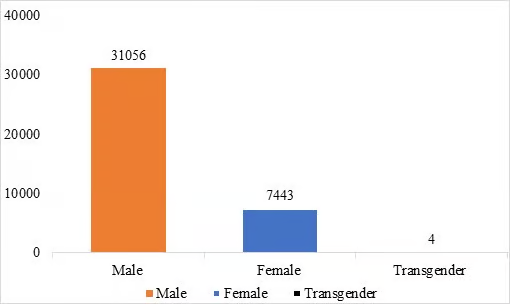
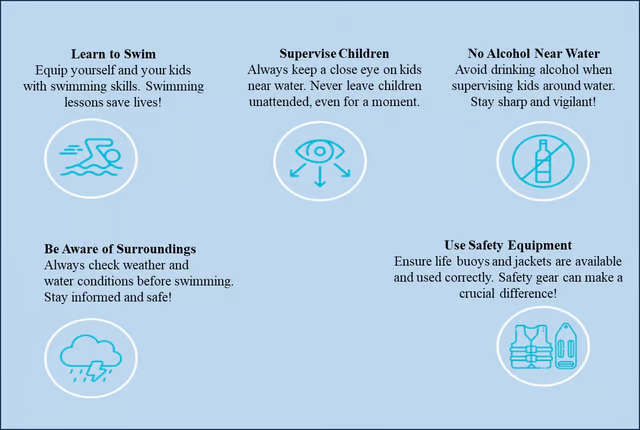
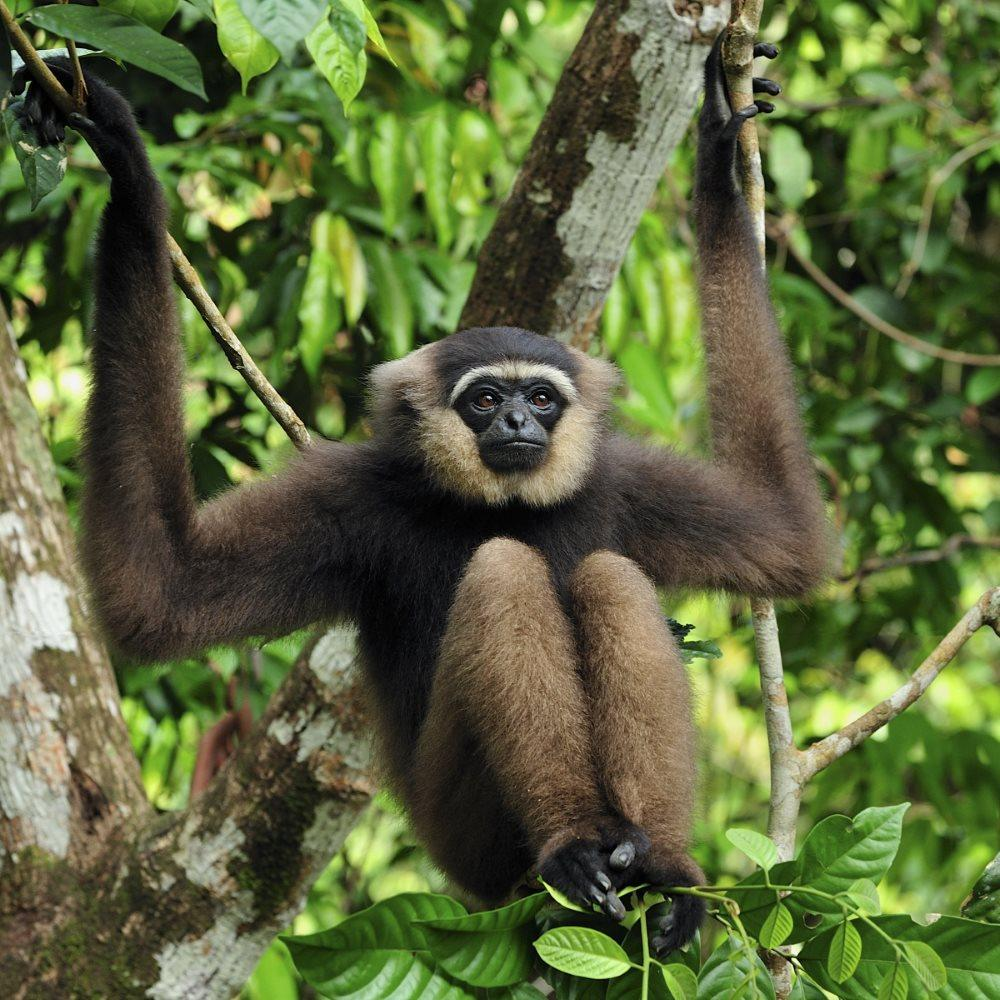
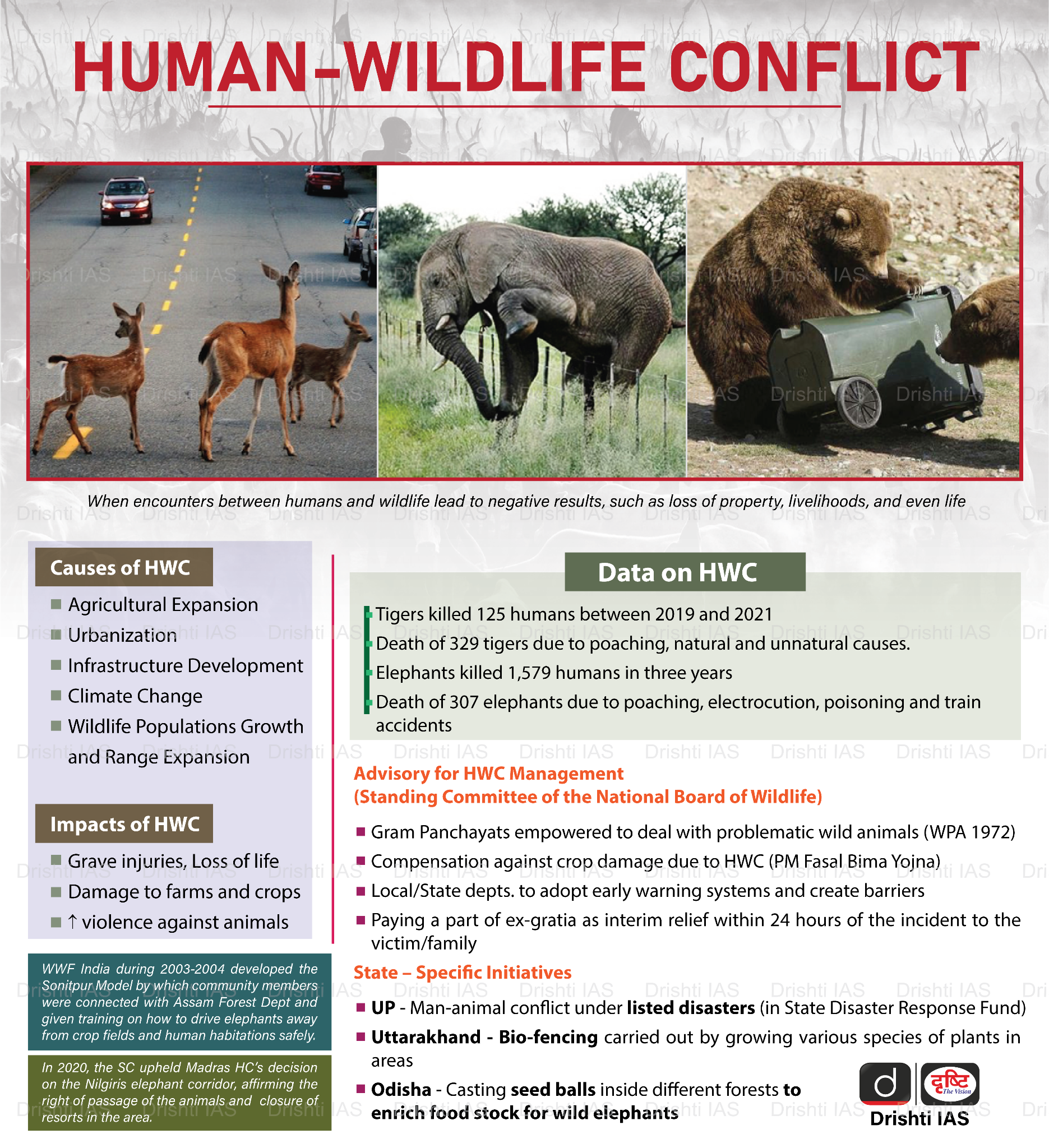
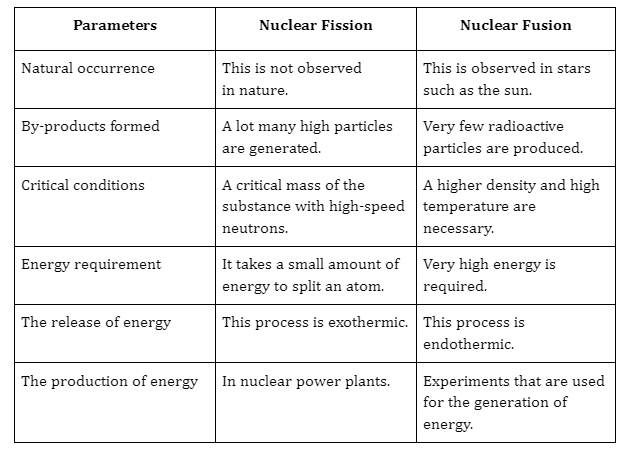
.png)

